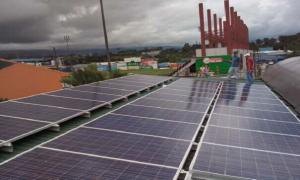Solar Inverter 600w
Solar Inverter 600w Related Searches
Solar Panel With Ac Inverter Solar Panel With Inverter Kit Solar Panel Kits With Inverter Inverter With Solar Panel Inverter With Solar System Solar With Electric Inverter Inverter With Battery Solar Inverter With Solar Panels Solar Charger With Inverter Rv Solar Kit With InverterHot Searches
Solar With Inverter Price Solar Inverter With 2 Battery Solar Inverter With Ac Outlet 1000w Solar Inverter Price Inverter Price Solar Solar Inverter Fault Light Solar Inverter Sale Lahore Solar Inverter Best Company Solar Inverter Best Brands Solar Inverter Factory Solar Inverter Type Solar Inverter Cover Stratco Solar Inverter Research Paper Solar Inverter Manufacturer Solar Inverter Set Solar Inverter Mini Solar Inverter Fire Risk Top Solar Inverter Companies Tesla Solar Roof Inverter Type Of Inverter For SolarSolar Inverter 600w Supplier & Manufacturer from China
Okorder.com is a professional Solar Inverter 600w supplier & manufacturer, offers integrated one-stop services including real-time quoting and online cargo tracking. We are funded by CNBM Group, a Fortune 500 enterprise and the largest Solar Inverter 600w firm in China.Hot Products
FAQ
- Yes, a solar inverter can typically be used with different types of solar panels. Solar inverters are designed to convert the direct current (DC) generated by solar panels into alternating current (AC) that can be used to power various electrical devices. As long as the solar panels produce compatible DC voltage and current, they can be connected to the solar inverter regardless of their type, such as monocrystalline, polycrystalline, or thin-film panels. However, it is important to ensure that the solar inverter is appropriately sized and compatible with the total capacity of the connected solar panels for optimal performance.
- The standby power consumption of a solar inverter refers to the amount of power that the inverter consumes when it is in standby mode or not actively converting solar energy into usable electricity. This power consumption is generally very low, typically ranging from 1 to 5 watts, as the inverter only needs to maintain its internal circuitry and monitor the solar energy availability.
- The common troubleshooting steps for a malfunctioning solar inverter typically include checking the connections and cables for any loose or damaged parts, inspecting the inverter display for error messages or warning lights, resetting the inverter by turning it off and on, and ensuring that the solar panels are receiving sufficient sunlight. If these steps do not resolve the issue, it may be necessary to consult a professional technician or the manufacturer for further assistance.
- Yes, a solar inverter can be used with solar-powered electric fences. Solar inverters are commonly used to convert the direct current (DC) energy generated by solar panels into alternating current (AC) energy, which is suitable for powering electric fences. By connecting the solar panels to a solar inverter, the generated solar energy can be efficiently utilized to power the electric fence system.
- Yes, a solar inverter can be used with a solar-powered data center. A solar inverter is an essential component that converts the direct current (DC) generated by solar panels into usable alternating current (AC) electricity for powering electrical devices and systems, including data centers. By using a solar inverter, a solar-powered data center can efficiently utilize the renewable energy generated by solar panels to meet its power requirements.
- The role of a solar inverter in a solar-powered remote monitoring system is to convert the direct current (DC) electricity generated by the solar panels into alternating current (AC) electricity that can be used to power the monitoring system. It also ensures that the electricity generated matches the requirements of the monitoring equipment, regulates the voltage, and assists in efficient power transmission and distribution.
- To monitor the performance of a solar inverter, you can follow these steps: 1. Install monitoring software: Most solar inverters come with monitoring software that allows you to track their performance. Install this software on your computer or use the manufacturer's online platform. 2. Connect to the inverter: Connect your computer or smartphone to the solar inverter using the provided communication interface, such as Wi-Fi, Ethernet, or RS485. This connection enables you to receive real-time data from the inverter. 3. Monitor energy production: Once connected, you can monitor the energy production of your solar inverter. The software will display crucial data like energy output, daily energy generation, and historical performance. This information helps you track the efficiency of your solar system. 4. Analyze system performance: Use the monitoring software to analyze the performance of your solar inverter. Identify any abnormalities or issues that may affect its efficiency. Make note of any error codes or alerts reported by the software and address them promptly. 5. Set up alerts and notifications: Configure the monitoring software to send you alerts and notifications. These can inform you about any significant changes in performance, such as a sudden drop in energy production or a fault in the system. It allows you to take prompt action and ensure optimal performance. 6. Regularly review data: Periodically review the data collected by the monitoring software. Compare current performance with historical data to identify any long-term trends or changes. This analysis can help you optimize your solar system's performance and detect any potential maintenance requirements. By following these steps, you can effectively monitor the performance of your solar inverter and ensure its efficient operation.













































